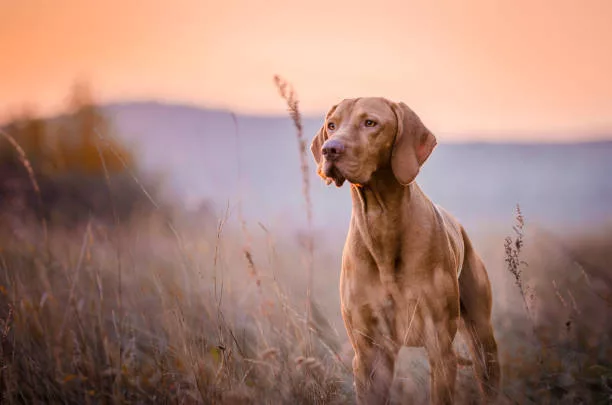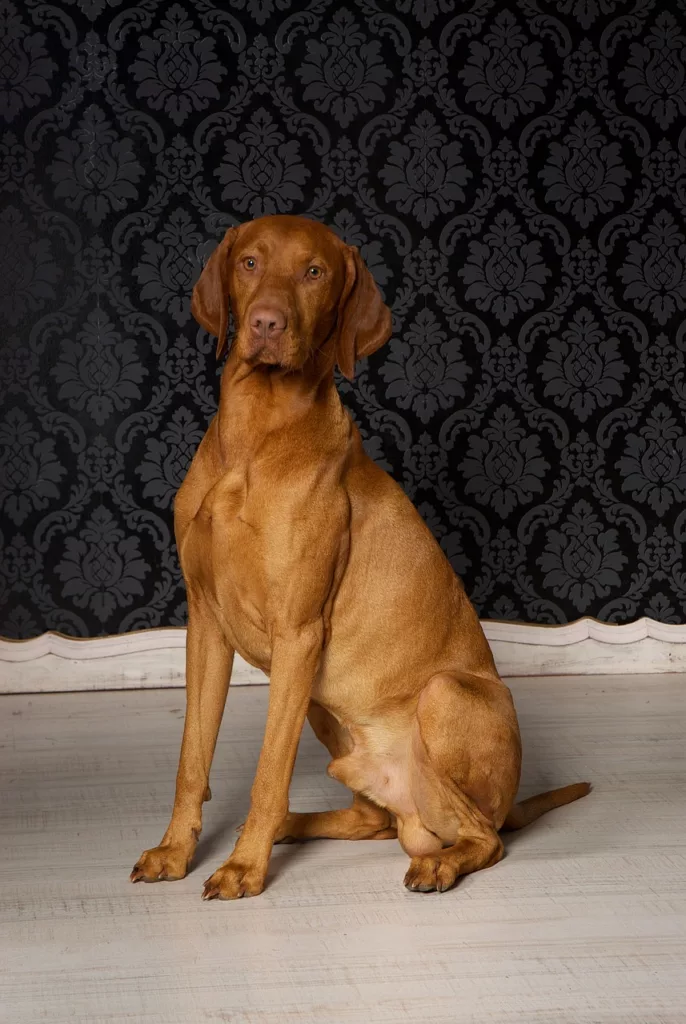The Vizsla is a unique breed that has captured the hearts of many dog lovers around the world. With their striking appearance, energetic personality, and loving nature, it’s no wonder why they have become such popular companions. However, owning a Vizsla comes with its own set of responsibilities and challenges. In this article, we will delve into the history, appearance, temperament, training, and care of this remarkable breed to help you better understand and appreciate the Vizsla.
History of the Vizsla
The Vizsla has a rich history that dates back to the early 19th century in Hungary. They were originally bred by Hungarian nobles who were looking for a versatile hunting dog that could excel in a variety of terrains. The Vizsla was specifically developed to hunt game birds, such as pheasants and quails, but they were also used for tracking larger game like deer and wild boar.

Origin of the Name
The name “Vizsla” comes from the Hungarian word “vizslat,” which means “to search.” This is a fitting name for the breed as they are known for their excellent tracking abilities and keen sense of smell.
Evolution of the Breed
The exact origins of the Vizsla are still debated, but it is believed that they are descended from ancient hunting dogs brought to Hungary by the Magyars, a nomadic tribe, in the 9th century. These dogs were then crossed with other breeds, such as the Turkish Yellow Dog and the Transylvanian Hound, to create the modern-day Vizsla.
Appearance of the Vizsla
The Vizsla is a medium-sized dog with a lean, muscular build. They stand between 21-24 inches tall at the shoulder and weigh between 45-65 pounds. They have a short, dense coat that is typically a solid golden rust color, although some may have white patches on their chest and feet.
Unique Features
One of the most distinctive features of the Vizsla is their eyes. They have almond-shaped eyes that are usually a shade of brown or amber. Their ears are also notable as they are long and floppy, giving them a soft and gentle appearance.

Coat Care
The Vizsla’s coat is low maintenance and only requires occasional brushing to remove any loose hair. They are not heavy shedders, but they do shed seasonally, so more frequent brushing may be needed during these times. Bathing should only be done when necessary, as over-bathing can strip their coat of its natural oils.
Temperament of the Vizsla
Vizslas are known for their energetic and affectionate nature. They are intelligent dogs with a playful and curious personality. They are also incredibly loyal and devoted to their families, making them excellent companions.
Socialization
Early socialization is crucial for Vizslas to ensure they grow up to be well-adjusted and friendly dogs. They are naturally social dogs and enjoy the company of other dogs and people. However, proper socialization will help prevent any potential aggression towards unfamiliar people or animals.
Exercise Needs
As a hunting breed, Vizslas have high energy levels and require plenty of exercise to stay happy and healthy. A daily walk or run is essential, but they also thrive on activities such as hiking, swimming, and playing fetch. Without enough physical and mental stimulation, Vizslas can become destructive and develop behavioral issues.
Training
Vizslas are highly trainable due to their intelligence and eagerness to please their owners. Positive reinforcement methods work best with this breed, as they respond well to praise and rewards. Early training is recommended to establish good behaviors and prevent any potential stubbornness.
Health Concerns
Like all breeds, Vizslas are prone to certain health issues. It’s essential to be aware of these potential concerns so you can take the necessary precautions to keep your dog healthy.
Hip Dysplasia
Hip dysplasia is a common condition in large and medium-sized breeds, including Vizslas. It occurs when the hip joint does not develop correctly, leading to pain and discomfort for the dog. Regular exercise and maintaining a healthy weight can help prevent this condition.

Eye Problems
Vizslas are also prone to eye problems such as progressive retinal atrophy (PRA) and cataracts. These conditions can lead to vision loss if left untreated. Regular check-ups with a veterinarian can help catch any potential eye issues early on.
Allergies
Some Vizslas may develop allergies to certain foods or environmental factors. Symptoms may include itching, redness, and skin irritation. If you suspect your dog has allergies, consult with your veterinarian to determine the cause and find an appropriate treatment plan.
Proper Care and Maintenance
To ensure your Vizsla stays happy and healthy, proper care and maintenance are crucial. Here are some essential tips to keep in mind:
Grooming
As mentioned earlier, the Vizsla’s coat is low maintenance, but regular brushing and occasional baths are necessary. Their nails should also be trimmed regularly to prevent overgrowth and discomfort.
Diet
A high-quality diet that meets the nutritional needs of an active breed like the Vizsla is essential. Consult with your veterinarian to determine the best food for your dog based on their age, size, and activity level.
Exercise
Regular exercise is vital for the physical and mental well-being of Vizslas. A lack of exercise can lead to boredom and destructive behavior. Aim for at least an hour of exercise per day, but adjust accordingly based on your dog’s needs.
Fun Facts About Vizslas
- The Vizsla is often referred to as the “Velcro dog” due to their tendency to stick close to their owners.
- They are excellent swimmers and have webbed feet that help them navigate through water.
- Vizslas have been featured in several movies and TV shows, including “Best in Show” and “We Bought a Zoo.”
- They were originally bred for hunting, but they also excel in other activities such as agility, tracking, and obedience competitions.
Video
Conclusion
In conclusion, the Vizsla is a unique and remarkable breed that requires a dedicated and active owner. With proper training, socialization, and care, they make loving and loyal companions. If you are considering adding a Vizsla to your family, do your research and make sure you can provide them with the love, attention, and exercise they need to thrive. With the right care and environment, the Vizsla will surely bring vibrance and joy into your life.